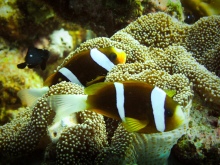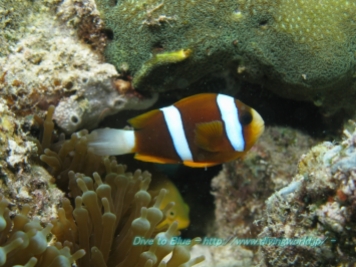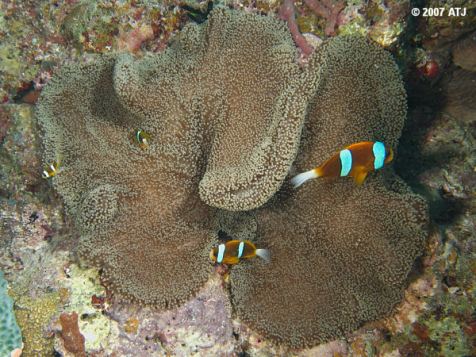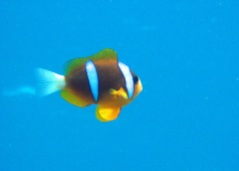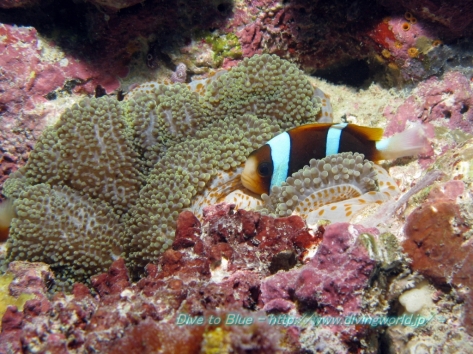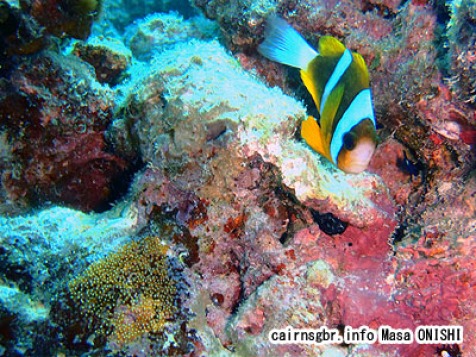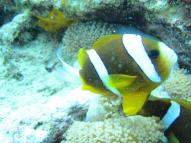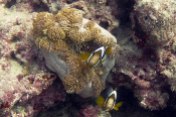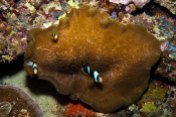Common Name: Barrier Reef Anemonefish
Scientific Name: Amphiprion cf clarkii
Distribution: Great Barrier Reef, rarely at Capricorn Reefs
Type Locality: n/a
Identification: Caudal fin white. Body colored an earthy brown, never darkened. Dorsal and ventral fins lighter, closer to orange. Stripes quite thick, especially the anterior stripe, which tends to widen dorsally.
Similar: Easily confused with Amphiprion akindynos, which has commonly, but incorrectly, been referred to as the Barrier Reef Anemonefish in most publications. That fish occurs primarily in the Capricorn Reefs and New South Wales and east into New Caledonia. The overall colors and patterns are roughly the same, but A. akindynos typically has far thinner stripes, with the anterior stripe usually broken dorsally. It also frequently has darker fins, concolorous with the brown hue of the body, if not a bit darker ventrally.
Notes: This is the true Barrier Reef Anemonefish, and it should be called as such. Surprisingly, it has never been scientifically described or even recognized as distinct, even though it is quite unlike any other species, save for its southerly doppelgänger . The continued conflation of this fish with the subtropical A. akindynos has led to rampant and universal misidentification.
Perhaps the most intriguing question needing to be answered is whether this fish’s phenotypic similarity with its southerly neighbor has to do with extensive hybridization. Aside from their similarity, this might also explain why there is no melanism found in this clarkii variation. In other regions where this is the case, the populations are suspected to have similarly experienced hybrid speciation (e.g. A. tricinctus, A. cf clarkii “Chagos”).
There is an amazing dissertation just waiting to be researched and written on this unique fish.



